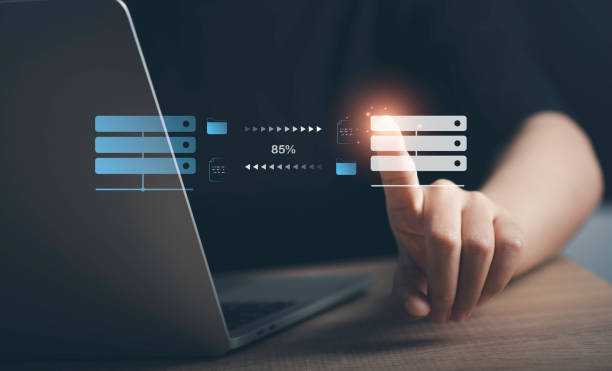What is Internal SEO and Why is it Important?
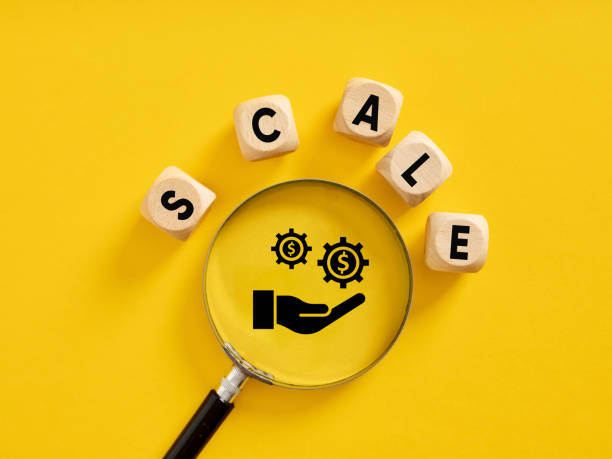
Internal SEO (On-Page SEO) refers to a set of actions taken within a website and its pages to improve the site’s ranking in Google search results and other search engines.
These actions include optimizing content, site structure, HTML tags, and other internal elements of the site.
The importance of Internal SEO lies in the fact that it helps search engines better understand your site’s content and present it to users who are looking for relevant information.
In fact, Internal SEO is the foundation for Off-Page SEO, and without it, your efforts to attract backlinks and increase site authority will be fruitless.
One of the most important aspects of Internal SEO is content optimization.
Your content must be valuable, relevant, and engaging to keep users on the site and reduce the Bounce Rate.
You should also use appropriate keywords in titles, meta descriptions, and the main text so that search engines can correctly identify the page’s topic.
Site structure also plays an important role in SEO.
Your site should have a logical and navigable structure so that users and search engines can easily move around it.
Using categories, tags, and appropriate internal links helps improve the site’s structure.
In addition, optimizing HTML tags such as Heading Tags, Alt Text, and Meta Tags is also very important.
These tags provide search engines with important information about the page’s content and help them index it correctly.
Finally, optimizing site speed and ensuring its responsiveness are also important factors in Internal SEO.
A fast and responsive site provides a better user experience and, as a result, earns a better ranking in search results.
By performing the actions of Internal SEO correctly and consistently, you can increase your site’s organic traffic and achieve your business goals.
Does your current website convert visitors into customers or drive them away? Solve this problem forever with professional corporate website design by Rasaweb!
✅ Create a powerful brand and credibility
✅ Attract target customers and increase sales
⚡ Get a free consultation now!
Keyword Research and Choosing the Best Ones
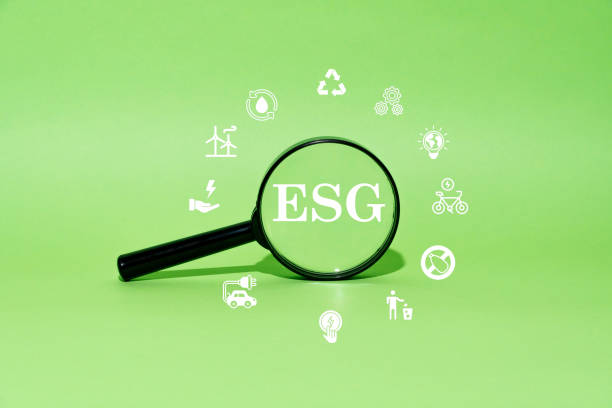
Keyword Research is the process of identifying the words and phrases that users type into search engines to find information related to your business.
This process is one of the most important steps in SEO, as it helps us optimize our site’s content based on the needs and interests of users.
To start keyword research, you can use various tools such as Ahrefs, Moz Keyword Explorer, Google Keyword Planner, and SEMrush.
These tools help you find keywords related to your business and check information such as search volume, competition, and their relevance to your site’s topic.
When choosing keywords, you should pay attention to a few things.
First, the keywords should be relevant to your site’s content.
Using irrelevant keywords can lead to a lower site ranking and an unfavorable user experience.
Secondly, you should pay attention to the search volume of the keywords.
Keywords with high search volume can attract more traffic to your site, but the competition for them is also greater.
Third, you should pay attention to the competition of the keywords.
Keywords with low competition are usually easier to rank for, but may have less search volume.
To choose the best keywords, you need to strike a balance between search volume and competition.
In addition, you can also use Long-Tail Keywords.
These keywords are long and specific phrases that usually have less search volume, but have a higher conversion rate.
For example, instead of using the keyword “shoes”, you can use the phrase “buy men’s sports shoes for running”.
Using long-tail keywords helps you attract more targeted traffic to your site and achieve a better ranking in search results.
After choosing the keywords, you should use them in titles, meta descriptions, main text, and other elements of your site.
However, you should avoid using too many keywords (Keyword Stuffing), as this can result in your site being penalized by Google.
Internal SEO means using keywords intelligently.
Optimizing Titles and Meta Descriptions

Title Tags and Meta Descriptions are important elements in Internal SEO that provide search engines and users with information about the page’s content.
Titles are the titles that appear in search results and browser tabs, and meta descriptions are summaries of the page’s content that appear below the title in search results.
Optimizing these two elements can help improve site ranking and increase click-through rate (CTR).
Titles should be short, attractive, and relevant to the page’s content.
It is best to keep titles between 50 and 60 characters long so that they are fully displayed in search results.
Titles should include the page’s main keyword and, if possible, be placed at the beginning of the title.
Also, titles should be unique and each page of your site should have a different title.
Using duplicate titles can lead to a lower site ranking.
Meta descriptions should also be short, attractive, and relevant to the page’s content.
It is best to keep meta descriptions between 150 and 160 characters long so that they are fully displayed in search results.
Meta descriptions should provide a summary of the page’s content and encourage users to click on your site’s link.
Also, meta descriptions should include the page’s main keyword and, if possible, be placed at the beginning of the description.
Like titles, meta descriptions should also be unique and each page of your site should have a different description.
To optimize titles and meta descriptions, you can use various tools such as Yoast SEO and Rank Math.
These tools help you easily edit titles and meta descriptions and preview how they will appear in search results.
Also, these tools provide you with suggestions for improving titles and meta descriptions.
By correctly optimizing titles and meta descriptions, you can improve your site’s ranking in search results and attract more traffic to your site.
Internal SEO can be greatly improved with these elements.
| Feature | Title Optimization | Meta Optimization |
|---|---|---|
| Length | 50-60 characters | 150-160 characters |
| Keyword | Includes main keyword | Includes main keyword |
| Unique | Must be unique | Must be unique |
Content Optimization and Keyword Usage

Content optimization is one of the most important aspects of Internal SEO.
Your content must be valuable, relevant, and engaging to keep users on the site and reduce the Bounce Rate.
You should also use appropriate keywords in titles, meta descriptions, and the main text so that search engines can correctly identify the page’s topic.
To optimize content, you should pay attention to a few things.
First, your content should be relevant to the needs and interests of users.
Before writing content, you should research what questions users have about the topic and what information they are looking for.
Then, create your content based on this information.
Secondly, your content should be valuable and useful.
Content that provides new and useful information is more likely to be shared by users and linked to your site.
Third, your content should be engaging and readable.
Using images, videos, charts, and other visual elements can help make content more engaging.
You should also use short paragraphs and simple sentences to make the content easier for users to read.
Regarding the use of keywords, you should pay attention to a few things.
First, you should use keywords that are relevant to the page’s topic.
Using irrelevant keywords can lead to a lower site ranking and an unfavorable user experience.
Secondly, you should use keywords in titles, meta descriptions, and the main text.
However, you should avoid using too many keywords (Keyword Stuffing), as this can result in your site being penalized by Google.
Third, you should use keywords naturally and fluently in the text.
Using keywords forcefully and unnaturally can make your text unreadable and unattractive.
To have effective Internal SEO, produce high-quality and optimized content.
Do you dream of a thriving online store but don’t know where to start?
Rasaweb is your comprehensive e-commerce website design solution.
✅ Attractive and user-friendly design
✅ Increase sales and revenue⚡ Get a free consultation
Image and Video Optimization

Images and videos are important elements in websites that can help make content more engaging and improve the user experience.
However, if images and videos are not properly optimized, they can slow down the site and negatively impact SEO.
To optimize images, you should pay attention to a few things.
First, you should use the appropriate format for images.
JPEG and PNG formats are usually the best options for web images.
JPEG format is suitable for images with many colors and PNG format is suitable for images with few colors and many details.
Secondly, you should reduce the size of the images.
Large images can slow down the site.
You can use online tools like TinyPNG and ImageOptim to reduce image size without losing quality.
Third, you should use the Alt tag for images.
The Alt tag helps search engines understand the topic of the image and display it in search results.
The Alt tag should be short, descriptive, and include the page’s main keyword.
To optimize videos, you should pay attention to a few things.
First, you should upload videos to the appropriate platforms.
YouTube and Vimeo are two popular platforms for uploading videos.
These platforms help you easily share your videos and display them in search results.
Secondly, you should use appropriate titles and descriptions for videos.
The video title and description should be short, engaging, and include the page’s main keyword.
Third, you should use appropriate tags for videos.
Tags help search engines understand the topic of the video and display it in search results.
To improve the Internal SEO of the site, optimizing images and videos is essential.
By following these tips, you can optimize your images and videos and have a positive impact on your site’s SEO.
Remember that Internal SEO is not limited to text, but includes optimizing all elements of the site.
Site Structure and Internal Link Optimization

Site structure and internal links play an important role in Internal SEO.
A logical and navigable site structure helps users and search engines easily navigate the site and find the content they want.
Internal links also help search engines understand the relationships between different pages of the site and transfer value and authority between them.
To optimize the site structure, you should pay attention to a few things.
First, you should use a hierarchical structure.
A hierarchical structure means that the pages of your site are logically categorized and linked from the main pages to the sub-pages.
Secondly, you should use categories and tags correctly.
Categories and tags help you organize your site’s content and show users and search engines what topics the different pages of the site are related to.
Third, you should use a clear and easy-to-use navigation menu.
The navigation menu should be displayed on all pages of the site and help users quickly access the main pages of the site.
To optimize internal links, you should pay attention to a few things.
First, you should use relevant internal links.
Internal links should link to pages that are related to the topic of the current page.
Secondly, you should use appropriate Anchor Text.
The anchor text should be short, descriptive, and include the main keyword of the destination page.
Third, you should use internal links naturally and fluently in the text.
Using too many internal links can make your text unreadable and unattractive.
An optimized site structure and appropriate internal links can help improve your site’s ranking in search results and improve the user experience.
Internal SEO Site Structure is Very Important
Website Speed Optimization
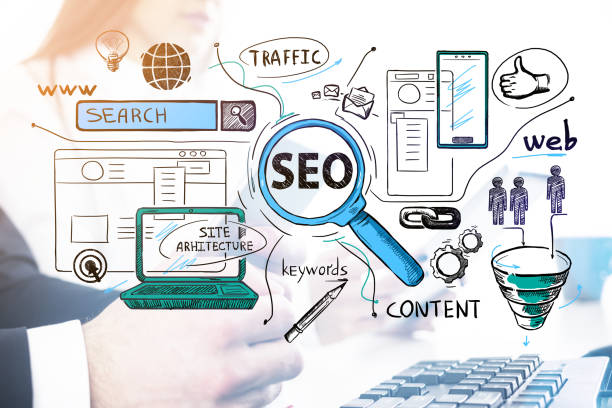
Site speed is an important factor in Internal SEO.
A fast site provides a better user experience and increases the likelihood that users will stay on the site and visit other pages.
Also, Google and other search engines consider site speed as one of the ranking factors.
A slow site can lead to a lower site ranking and loss of traffic.
To optimize site speed, you should pay attention to a few things.
First, you should use quality hosting.
Quality hosting provides sufficient bandwidth and resources for your site and helps improve site speed.
Secondly, you should optimize your images and videos.
Large images and videos can slow down the site.
You can use online tools like TinyPNG and ImageOptim to reduce image size without losing quality.
Third, you should use a lightweight and optimized Content Management System (CMS).
WordPress is one of the most popular content management systems, but if it is not properly optimized, it can slow down the site.
You can use speed optimization plugins like WP Rocket and LiteSpeed Cache to improve your site’s speed.
In addition, you should use a Content Delivery Network (CDN).
A CDN is a network of servers located in different parts of the world that store your site’s content on these servers.
When a user visits your site from a distant geographic location, the CDN delivers the site’s content from the server closest to the user, thereby increasing site speed.
By optimizing site speed, you can improve the user experience, increase your site’s ranking in search results, and attract more traffic to your site.
Internal SEO and site speed are related.
| Action | Description |
|---|---|
| Image Optimization | Reducing image size and using the appropriate format |
| Using CDN | Delivering content from the server closest to the user |
| Code Optimization | Reducing code size and using cache |
Mobile Optimization
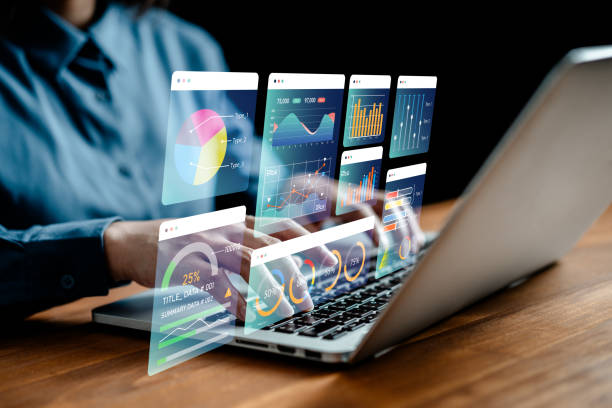
Mobile Optimization refers to the process of designing and developing websites in such a way that they are displayed correctly on mobile devices and provide a good user experience.
Given that more than half of web traffic is done through mobile devices, mobile optimization is an important factor in Internal SEO.
To optimize for mobile, you should pay attention to a few things.
First, you should use a Responsive Design.
Responsive design means that your website automatically adjusts the size and layout of its elements based on the screen size of the user’s device.
Secondly, you should optimize your site speed for mobile devices.
Mobile users usually expect sites to load quickly.
You can use online tools like Google PageSpeed Insights to check your site’s speed on mobile devices and get suggestions for improving it.
Third, you should use large and easy-to-use fonts and buttons.
Mobile users usually use their fingers to navigate sites, so fonts and buttons should be large enough to be easily clicked.
In addition, you should avoid annoying Pop-ups on your mobile devices.
Pop-ups can disrupt the user experience and lead to a lower ranking of your site in search results.
By optimizing for mobile, you can improve the user experience, increase your site’s ranking in search results, and attract more traffic to your site.
Google gives better rankings to sites that are optimized for mobile.
Internal SEO and mobile optimization are two sides of the same coin.
Are you tired of your e-commerce website not generating as much revenue as its potential? Rasaweb, a specialist in professional e-commerce website design, solves this problem forever!
✅ Increase sales rate and revenue
✅ High loading speed and unique user experience
⚡ Get free e-commerce website design consultation
Using Schema Markup
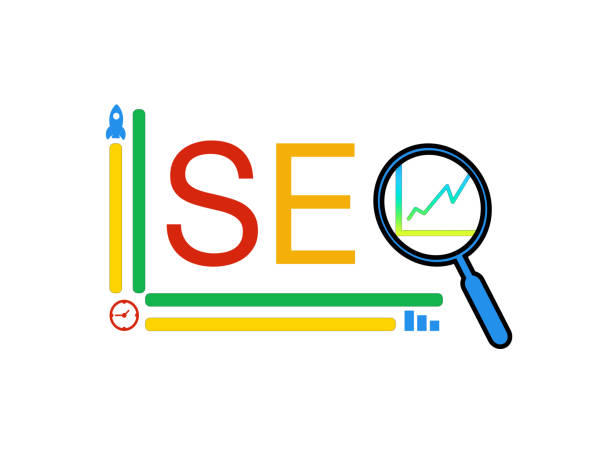
Schema Markup is code that you can add to your website to provide search engines with more information about the page’s content.
Schema Markup helps search engines better understand the topic of the page and display important information in search results.
For example, if a page on your site is about a recipe, you can use Schema Markup to provide information such as the name of the dish, ingredients, cooking time, and user ratings in search results.
Using Schema Markup can help improve your site’s click-through rate (CTR) in search results.
When users see more information about the page’s content in search results, they are more likely to click on your site’s link.
Also, using Schema Markup can help improve your site’s ranking in search results.
Google and other search engines give better rankings to sites that use Schema Markup.
To use Schema Markup, you can use various tools such as Schema Markup Generator.
These tools help you easily create the Schema Markup code and add it to your website.
After adding Schema Markup, you can use Google’s Rich Results Test tool to check whether your Schema Markup is implemented correctly.
Internal SEO becomes stronger with Schema Markup.
Using Schema Markup is an advanced Internal SEO strategy.
Continuous Analysis and Improvement of Internal SEO
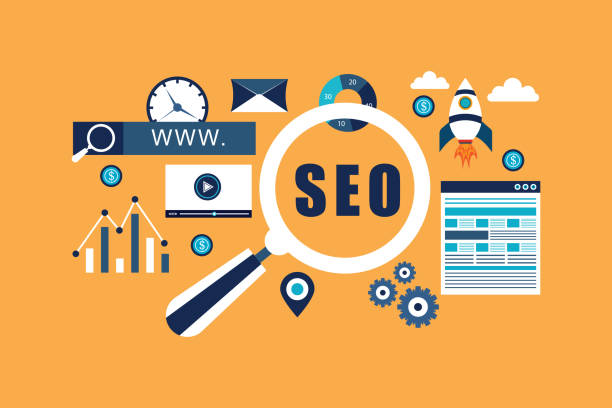
Optimizing Internal SEO is a continuous process and requires continuous analysis and improvement.
After performing Internal SEO actions, you should regularly check your site’s performance and make the necessary changes.
To analyze site performance, you can use various tools such as Google Analytics and Google Search Console.
Google Analytics helps you check your site’s traffic and see information such as the number of visitors, bounce rate, time spent on the site, and popular pages.
Google Search Console helps you check your site’s performance in search results and see information such as the keywords that your site ranks for, the number of clicks and impressions, and site errors.
Based on the information you get from Google Analytics and Google Search Console, you can make the necessary changes to your site.
For example, if you notice that the bounce rate of one of your site’s pages is high, you can improve the content of that page or change its structure.
If you notice that your site does not rank for some keywords, you can change your target keywords or optimize your site’s content based on the new keywords.
By continuously analyzing and improving Internal SEO, you can improve your site’s ranking in search results and attract more traffic to your site.
Remember that Internal SEO is not a race, but a journey.
With continuous monitoring and analysis, you can be informed of changes to Google’s algorithms and change your Internal SEO strategy accordingly.
This continuous approach helps you stay competitive in search results and achieve your business goals.
Internal SEO is a long-term investment.
Frequently Asked Questions
| Question | Answer |
|---|---|
| What is On-page SEO? | On-page SEO refers to a set of actions that are performed within your website to improve its ranking in search engine results. This includes optimizing content, site structure, and HTML code. |
| Why is internal SEO important? | Internal SEO helps search engines understand the content of your page and determine whether your content is relevant to searchers. This is the foundation of any successful SEO strategy. |
| What are the key elements of internal SEO? | Page title (Title Tag), meta descriptions (Meta Description), use of keywords, image optimization, heading structure (H1, H2, …), internal linking, and content quality are key elements. |
| How to optimize the page title (Title Tag)? | The page title should include the main keyword, be attractive and encouraging to click, and its length should be between 50 and 60 characters (or suitable pixels) so that it is fully displayed in search results. |
| What role does the meta description (Meta Description) play in internal SEO? | The meta description is a summary of the content of the page that is displayed below the title in search results. Although it does not directly affect ranking, it helps SEO by increasing the click-through rate (CTR). |
| What is the importance of using heading structure (H1, H2, H3) in internal SEO? | Headings structure the content of the page and make it easier to read. H1 is usually the main title of the page and should include a keyword. H2 and H3 are used to organize sub-sections and help search engines understand the content hierarchy. |
| How to use keywords effectively in content? | Keywords should be used naturally and logically throughout the content, including the introduction, body, and conclusion. Avoid overfilling keywords (Keyword Stuffing). |
| What steps does image optimization for internal SEO include? | Includes compressing images to reduce size, using descriptive file names, adding appropriate alternative text (Alt Text), and optimizing the title and description of the image. Alt Text is critical for accessibility and helping search engines understand image content. |
| What is internal linking and what are its benefits? | Internal linking means creating a link from one page on your website to another page on the same website. This helps users easily navigate your site, distributes page authority throughout the site, and helps search engines better understand your site’s structure. |
| What is the importance of content quality in internal SEO? | High-quality, accurate, comprehensive and valuable content for users is the cornerstone of internal SEO. Search engines prefer content that meets the needs of users. High-quality content leads to more user time on the site (Dwell Time) and reduced bounce rate, which are positive SEO signals. |
And other services of Rasa Web advertising agency in the field of advertising
Smart Linking: Professional optimization to attract customers using attractive user interface design.
Smart Social Media: Designed for businesses looking to attract customers through intelligent data analysis.
Smart Digital Branding: Professional optimization to improve SEO ranking using real data.
Smart Customer Journey Map: Designed for businesses looking to analyze customer behavior through attractive user interface design.
Smart SEO: A new service to increase user engagement through attractive user interface design.
And more than hundreds of other services in the field of internet advertising, advertising consulting and organizational solutions
Internet Advertising | Advertising Strategy | Reportage Ad
Resources
On-Page Optimization: The Complete Guide from Seobility
,On-Page SEO: A Practical Guide to Higher Rankings
,On-Page SEO Optimization: Moz Guide
,The Ultimate On-Page SEO Guide in 2024
? Lead your business on the path to digital success with Rasaweb Afarin Digital Marketing Agency. From custom website design to SEO optimization and advertising campaign management, we are with you every step of the way to have a powerful and effective presence in the online space. Contact us for advice and to start your business’s digital transformation.
📍 Tehran, Mirdamad Street, next to the Central Bank, South Kazerun Alley, Ramin Alley No. 6
“`

